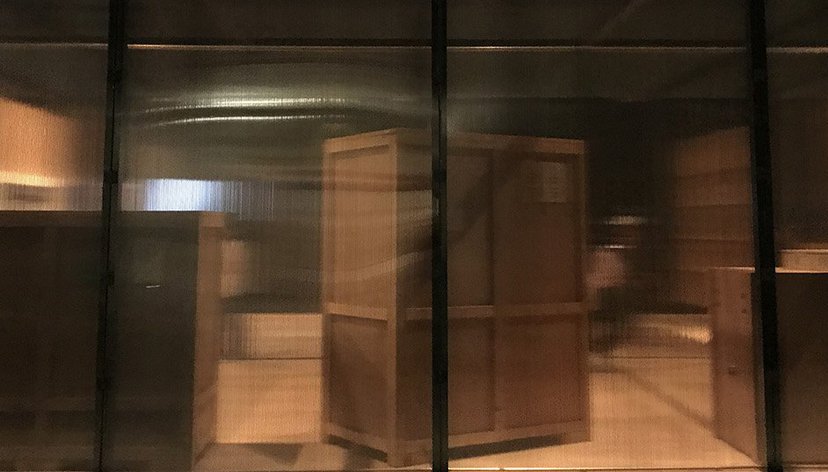
Victoria is a curator and active researcher whose projects span from the post-war period to the contemporary.
During the mid-1990s Victoria worked as a freelance curator, project manager and research consultant in the fields of visual arts and architecture including the project-management of the Competition to select an architect for Tate Modern; the relaunch of the Fourth Plinth Project in Trafalgar Square for the Mayor of London’s Cultural Office; the Opening of Tate Modern, with commissions including Michael Craig-Martin, Jeremy Deller and Acid Brass, William Forsythe and Ballet Frankfurt and Sir Harrison Birtwistle; and was co-ordinator of seven major debates, ‘London in the 21st Century’, for The Architecture Foundation.
In 1994, at the Stedelijk Museum in Amsterdam, she worked closely with the American performance artist Joan Jonas on her retrospective which focused on five reconstructions of her video installations and initiated and curated a film programme of her videos, along with being invited to manage the interpretation programme for the exhibition and project managing the catalogue. This subsequently informed much of the work behind the reconstruction of the Independent Group exhibition ‘Parallel of Life and Art’ (1953) as part of the first ever retrospective of the work of the British artist-photographer Nigel Henderson, which Walsh also researched and curated, publishing the first monograph on the artist, Nigel Henderson: Parallel of Life and Art (Thames & Hudson, 2000).
In 2005, working with the curator Donna De Salvo, she organised the exhibition Open Systems: Rethinking Art c. 1970 at Tate Modern. Prior to joining the Royal College of Art in 2012, Victoria was Head of Public Programmes at Tate Britain (2005–11).
Working across both the museum, gallery and academic sector, Victoria Walsh has taught widely at institutions including Chelsea College of Arts, Architectural Association and University of Westminster. She received her doctorate in Art History from Oxford Brookes University in 1996, and also holds degrees in Art History (M.A., Courtauld Institute, London) and Curating (M.A., Royal College of Art).
Key details
School, Centre or Area
Research projects
More information
Research interests
Victoria has consistently engaged with interdisciplinary research throughout her career moving across both the public and private realm and different sectors (Visual Arts, Museums and Galleries, Arts and Funding Agencies) and invariably across different disciplines (Art History, Visual Cultures, Curatorial Studies, Cultural Studies, Social Sciences, Architecture and Urbanism, Cultural Policy Studies, and New Media).
She is particularly interested in the development of interdisciplinary methodologies in relation to practice-led, practice-based, collaborative and situated action research as a means to approach the theory/practice divide and the separation of knowledge spheres that no longer articulate or address the contemporary experience of culture or the conditions of interpretation.
Current and recent projects
MeLA (European Museums in the age of Migrations)
Research Field 4: Curatorial and Artistic Research
Principal Investigator
MeLa is a four year research project funded by the European Commission under the Socio-economic Sciences and Humanities Program (FP7th) and is an interdisciplinary programme which reflects on the new museum’s role with the aim to define new strategies for contemporary museums in a context characterized by a continuous migration of people and ideas. The RCA’s Curating Programme is the lead partner of Research Field 4, which is focused on questions of the relevance and strategic value of Curatorial and Artistic Research in relation to the MeLa project themes. The Museu d’Art Contemporani de Barcelona / MACBA (Barcelona, Spain) is the primary collaborative research partner with the RCA.
Art School Educated: Curriculum Development and Institutional Change in UK Art Schools 1960—2010
Co-investigator
This is a Tate research project focused on producing interrelated histories of art education, artists’ relationships with society, and the impact of art pedagogy on artistic production to support Tate’s strategic aim of working with a wide community of artists. ‘Art School Educated’ reflects the fact that, despite their long history, distinguished national record and recent transformation, a comprehensive overview of UK art schools has yet to be documented. This three-year project represents a first stage for Tate and will identify the decisive reforms in the curriculum of the major London art schools from the 1960s to the present day, and asks how the curricula that were adopted relate to the output of the artists whose work is represented in Tate’s collection. As Co-investigator, Victoria has supported the development of the project and has particularly focused on the academicisation of art school pedagogy and practice, and the emergence and methodologies of practice-based and practice-led research.
www.tate.org.uk/about/projects/art-school-educated
Tate Encounters: Britishness and Visual Cultures (2007-10)
Co-investigator
‘Tate Encounters: Britishness and Visual Culture’, funded by the Arts and Humanities Research Council under their strategic programme ‘Diasporas, Migration and Identities’, was a major three-year collaboration between Tate Britain, Chelsea College of Art and Design and London South Bank University. The project addressed the relationship between curatorial practices in the art museum, audience development and engagement, and the impact of cultural diversity policy. The research findings centre around the limits of the politics of representation and identity and aesthetic modernism as a curatorial trope within an analysis of the contemporary cultural condition of hypermodernity, globalisation and digital distribution.
Publications, exhibitions, other outcomes
Book Sections
Walsh, V. (2016) ‘Man in Equipoise: Richard Hamilton, Regeneration and Urban design' in This was Tomorrow: Pop Art in Great Britain. Kunstmuseum Wolfsburg, Wolfsburg.
Walsh, V. (2015) 'Lawrence Alloway: Pedagogy, Practice and the Recognition of Audience 1948-59' in Lawrence Alloway: Critic and Curator. Issues and Debates. Getty Research Institute, Los Angeles, US.
Walsh, V. (2014) ‘Post Critical Museology: Practice-based Research in the Museum’, in Katarzyna Murawska Muthesius (eds), From Museum Critique to the Critical Museum, Aldershot: Ashgate
Walsh, V. and Dewdney, A. (2014) ‘The Distributed Museum and the Crisis of European Representational Systems’, in Pearla Innocenti (ed) Migrating Heritage, Aldershot: Ashgate
Walsh, V. and Dewdney, A. (2013) ‘From Cultural Diversity to the Limits of Aesthetic Modernism: The Cultural Politics of National Collection, Display and Exhibition’, in Agency, Ambivalence, Analysis. Approaching the Museum with Migration in Mind, Milan: RCA / Mela
Walsh, V., Dewdney, A., and Dibosa, D. (2012) ‘Cultural Diversity: Politics, Policy and Practices’, in R.Sandell and E. Nightingale (eds), Museums, Equality and Social Justice, London and New York: Routledge
Walsh, V., Dewdney, A., and Dibosa, D. (2011) ‘Cultural Inequality, Multicultural Nationalism and Global Diversity’, in Beyond Cultural Diversity: The Case for Creativity, Third Text/Arts Council England
Books
Walsh, V., Dewdney, A., and Dibosa, D. (2012) Post-critical Museology: Theory and Practice in the Art Museum, London and New York: Routledge
Walsh, V. (2011) Tate Encounters: Britishness and Visual Culture, London: Tate
Journal Articles
Walsh, V. and Dewdney, A. (2017) 'Temporal Conflicts and the Purification of Hybrids: Tate, a case in point' Stedelijk Studies (Curating the Collection), 5 (5).
Walsh, V. and Zimmerman, C. (2016)'New Brutalist Image 1949–55' British Art Studies, 4 (4).
Walsh, V. (2016) 'Redistributing Knowledge and Practice in the Art Museum' Stedelijk Studies (Between the Discursive and Immersive), 4 (4). pp. 1–16.
Walsh, V. (2013) 'Reordering and Redistributing the Visual: The expanded "field" of pattern-making in Parallel of Life and Art and Hammer Prints’ Journal of Visual Culture, 12 (2). pp. 222–244.
Walsh, V. (2009) '”… to give the sensation without the boredom of conveyance”: Francis Bacon and the Aesthetic of Ambiguity’ Visual Culture in Britain.
External collaborations
- External examiner for Kingston University.




